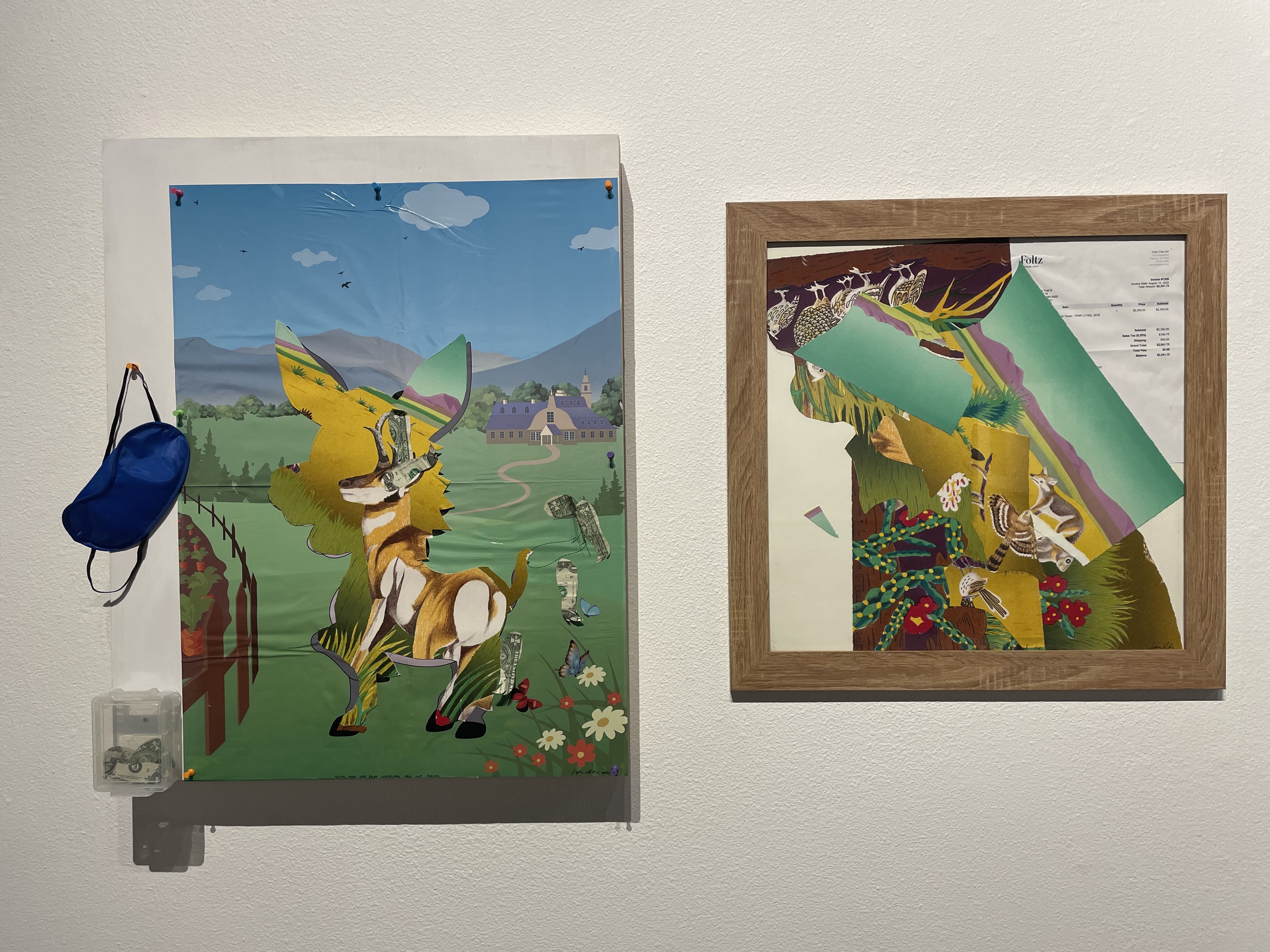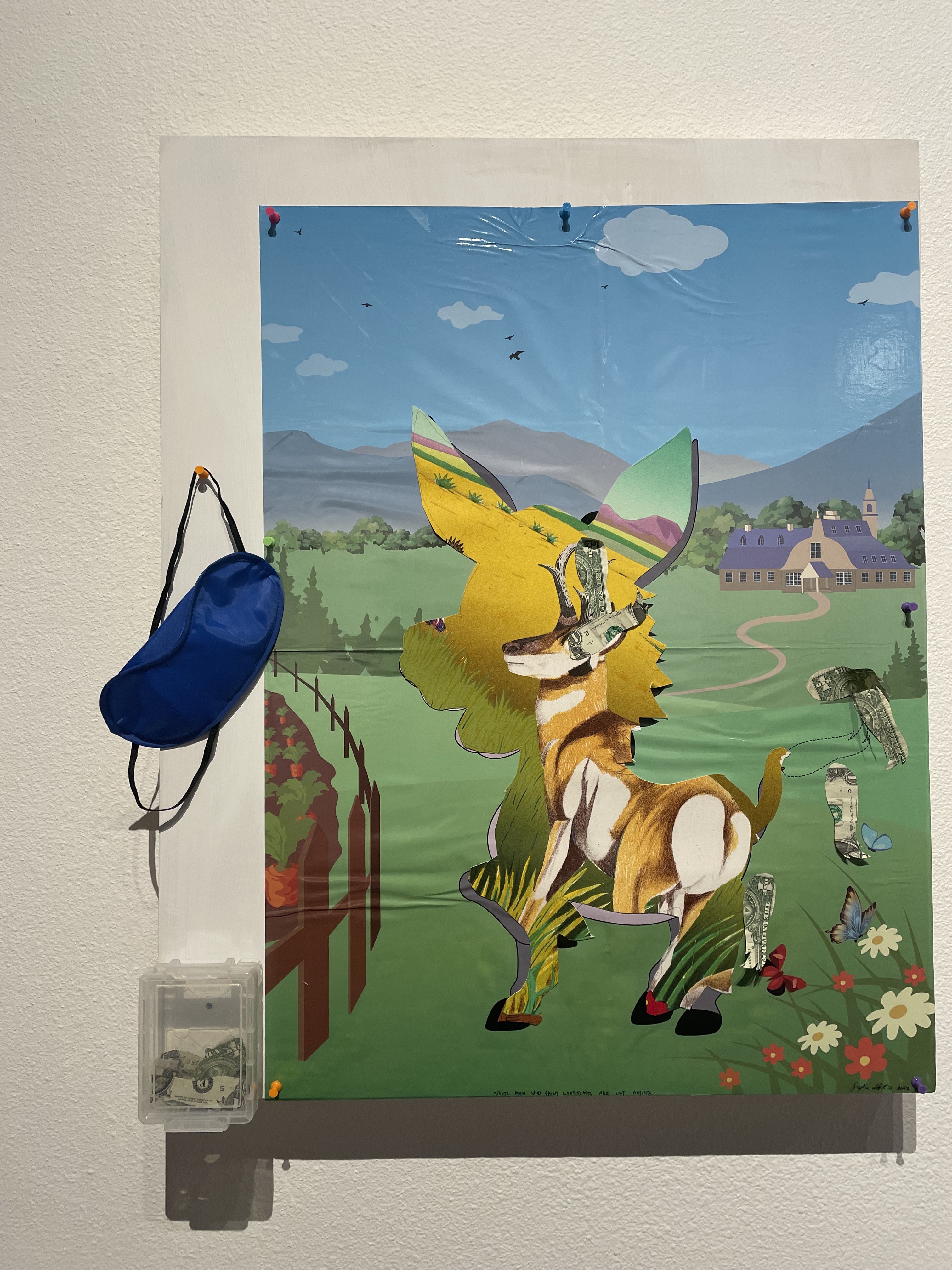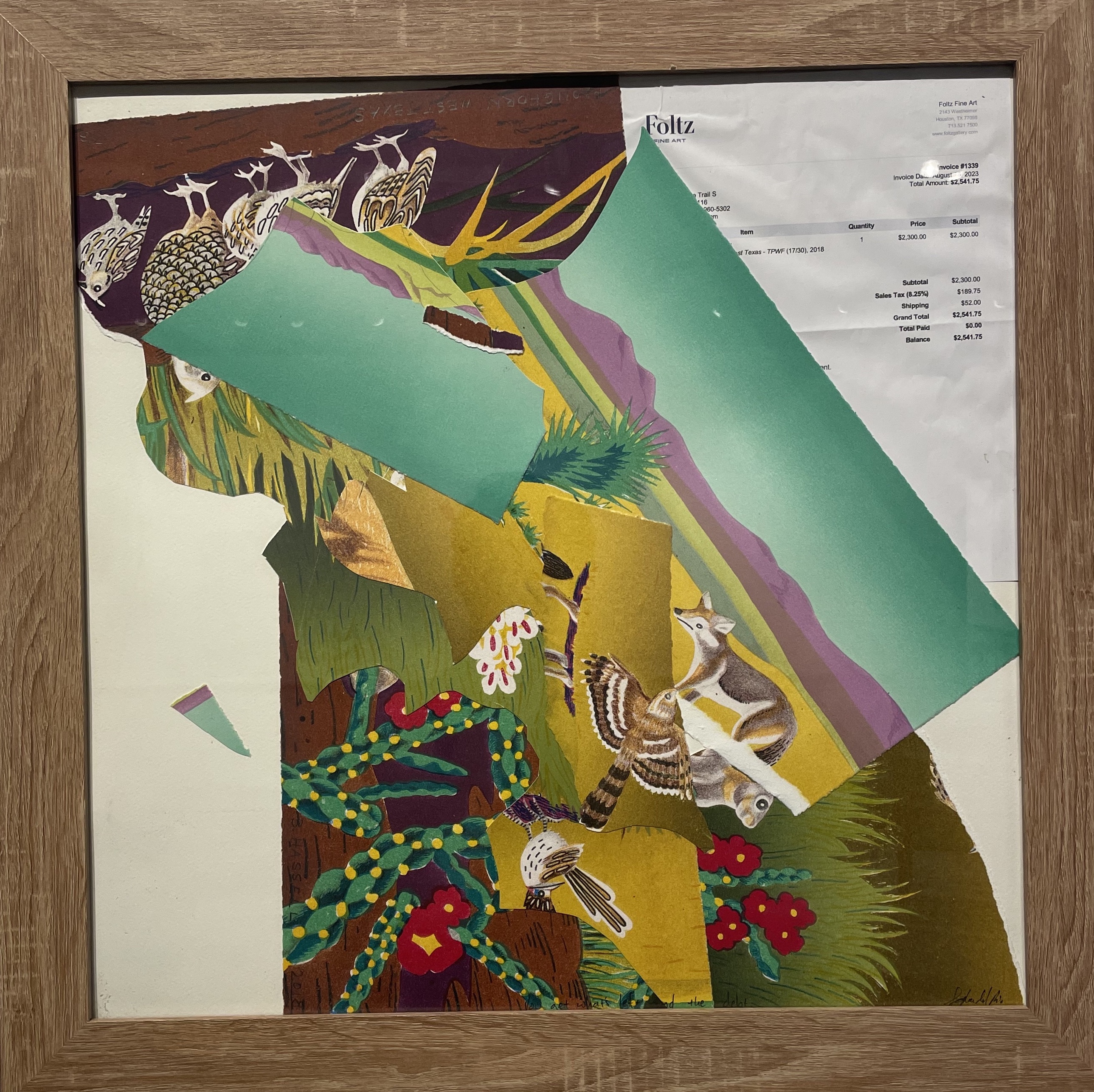Performance Work
I
Purpose of the work:
1. To educate people on landscape art as an artform that has colonial roots.
2. To discuss the current partnerships between wealthy landowners, and the State of Texas Parks Department as problematic.
3. To call on artists working in the landscape genre to conceptualize their work, and do more than paint renderings of land.
White men who paint landscapes are not artists.

Above is the resultant game board from my performance piece, with the same title, White men who paint landscapes are not artists.
During the performance I took a Pin-the-tail-on-the-donkey game poster I purchased for $8. I chose this imagery for its a pastoral scene,as well as being an American game in origin. This particular poster has a masion in the distance as well as a fence cutting through the property. The poster is a great depiction of a cultivated, tamed landscape. The image above is of the poster and game-set.
The speech that accompanied the performance, White men who paint landscapes are not artists:
Landscape art is steeped in colonialism. Once upon a time, while the Americas were being colonized, European royalty would send painters to the newly discovered Americas to return with images of the lands they were seizing.
In Texas, ranchers and land owners commission landscape artists today to paint the property they privately own in the same fashion. The land was originally acquired through colonial seizure and westward expansion. Now land owners have the option to sell their land to the State of Texas to become park land. These people call themselves conservationists and environmentalists, but all these landowners have done is use the land for their own purposes and then sell it to the State authorities for profit.
Land owners that sell their holdings to the State of Texas make out like bandits. Often these large properties are ideal for communities and have access to water. The sale of land to the Parks Department keeps the land out of reach of the everyday people needing access to affordable land for building housing.
Cost of housing and land is at an all-time high. The cost of an acre of land increased to $3800, a 12.4% increase from the previous year. The average cost of a residential area acre is $5,050, up 14.3% from the previous year.
The problem is not that park land is being created or that people are selling their property. The problem is that the land is, and has been, in control of the wealthy, elite. As land becomes less available, our housing crisis will worsen.
I am calling artists who paint in the landscape genre to reinvigorate the art genre by conceptualizing their work. Stop painting pretty pictures to display the assets of the wealthy.
In using the pin-the-tail-on-the-donkey game I am calling into the question the rules behind how we operate in the Landscape Genre as Artists and community members. I am questioning the nature of the larger game.
Landscape painters, will you keep painting pretty pictures for the wealthy to hang in their mansions? Does your work conserve land or does it capture a pretty moment for a wealthy landowner to admire in his private home?

The framed work on the right is titled, You get what remains and the debt. This piece is made up of the scraps from the promotional poster with the reciept.

I chose the lithograph titled Pronghorn specifically because it is a promotional poster commissioned by the Texas Parks Department. I wanted to call attention to the art genre of landscape and land acquisition and land hoarding. I thought this promotional lithograph was a perfect piece in showcasing how the traditional use of selling pretty, scenic pictures is for the wealthy to feel good about land acquisition. The lithograph was commissioned by the Texas Parks and Wildlife Department. It is overpriced, and unattainable for the average American to buy.
Aesthetically, the promotional lithograph has a pronghorn deer, a native animal to Texas, positioned in the center and looking over its shoulder at the viewer. It's almost identical to the stance of the domesticated donkey in the Pin-the-tail-on-the-donkey board game.
I took one ubiquitous Pin-the-tail-on-the-donkey landscape poster, that cost me $8 on Amazon, and pasted the over-priced, promotional lithograph on top of the donkey. The visual language is clear, if artists do not conceptualize the landscape genre then artists are only producing beautiful, vapid work in the tradition of colonialism.